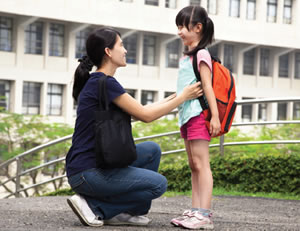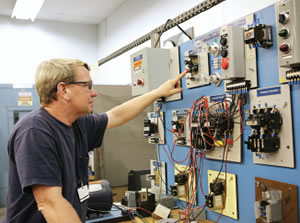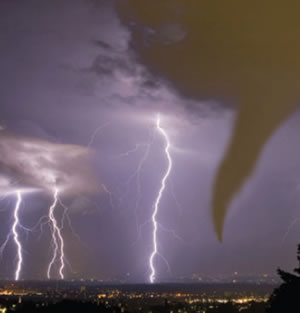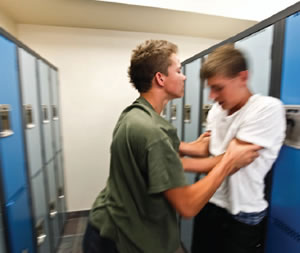System Integration: Examining All Factors
- By Sarat Pratapchandran
- 11/01/13
 Unlocked doors, bullying and the threat of natural disasters are safety issues facing our schools. A parent, school safety experts and architects and designers give us insights on what is wrong and how simple solutions can often counter safety threats in schools.
Unlocked doors, bullying and the threat of natural disasters are safety issues facing our schools. A parent, school safety experts and architects and designers give us insights on what is wrong and how simple solutions can often counter safety threats in schools.
When was the last time you visited a school and saw at least one door unlocked or a teacher’s classroom keys lying on the desk?
The biggest safety threat to schools today is unlocked doors, says Jim Jensen, security consultant at Ingersoll Rand.
“I still see teachers with their lanyards and keys lying on their desks and an intruder can grab these any time.”
As schools spend more investments in technology, industry experts like Jensen feel that “no amount of security deterrence or technology can take over the human element that creates this weakness.”
According to Paul Timm, a national safety expert and president at RETA Security, the top three safety issues in schools today are lack of access control, lack of safety training and lack of emergency procedures.

IT’S ALL CONNECTED. In order to be truly effective, monitors, alarms, communications systems, security lighting, video feeds and other tools used to keep a school campus safe need to function in a way that allows them to complement each other. Once that system is in place, you must make sure that staff is trained properly in order to realize the maximum benefits of these tools.
Schools were designed for people to enter through many doors and most have done a bad job to minimize access. “When schools do not have a protocol for visitor management, someone could let an intruder in through another door at a different section of the school,” says Timm.
Visitor management standards are inefficient in many schools. Most still rely on archaic pen and paper sign in sheets to manage visitors. Visitors who sign it at the front entrance may still linger within the premises, as most schools do not implement an effective way to check them out.
“What if she or he hid in custodial closet or in a vacant classroom? We do not do a good job across the board,” says Timm.
Our culture embraces the school as an integral part of the community and experts like Timm believe that schools often trade security for convenience. “The bottom line is that security is viewed as a necessary evil and this mentality leaves opportunities for those wanting to do more harm.”
According to Caroline Lobo, director of Education Studio at Orcutt-Winslow, a national architecture, planning and design firm, there is a call to tighten security and as a “society we need to really debate on this topic.”
Some schools may opt out of having windows and other open areas to ward off security threats. In such cases, Lobo asks: “Will you buy a house that is not connected to the outside?”
“Serving our client, the student is the most important issue. We try to understand how each student thinks in terms of their learning space. What makes a good learning environment for a student so that they gain knowledge? Our goal as designers is to create a learning space that does not come in the way of the learning process.” Lobo says she always asks the question: “How do we facilitate learning in an innovative way?”
Designers like Lobo want to create personalized learning spaces based on each students’ style of learning. Some are comfortable in lecture style spaces, others like small group settings and there are others who do not want to be disturbed.
“In terms of security we need to make sure that every nook and cranny is visible to the adult. We have to design from the point of view of the learners.”
She added that school resource officers play a critical role in school safety and security. Their presence and their relationships with staff and students helps a great deal in keeping schools safe.
According to Dan Demland, a Phoenix architect, “in major school tragedies, what we have seen is a failure of the defense mechanism.”
There has also been much stress on having every staff member have the mindset of a SWAT team member. “But the reality is, we do not have a profile of the potential intruder. Have we ever studied what makes up a potential school shooter? This is the only way we can understand more about this character.”
Demland suggests that we need to take a deeper look into the psychology of the killer — what leads these individuals to commit such acts?”

PHOTO © JACOB WACKERHAUSEN/ISTOCK
CONCERTED EFFORT. In order to create an efficient and effective integrated security plan, designers, school administrators, security advisors and local law enforcement and fire officials need to work together during the initial planning stages.
For instance, Demland says the incidents at Sandy Hook were a “forced breach, a crime of opportunity that was conducted through a path of least resistance. There was no barrier once the shooter got into the school and opened fire going from room to room.” This goes back to our topic of the lack of access control and how schools are investing in measures to protect staff and students.
The history of school design has also evolved through the years. “We need to take a look at the history of school design as we think of security and safety in schools. We began with the single-room red brick house, in the ‘50s and ‘60s, we had schools with doors leading to an exterior space, then we moved on to closed spaces and later into what is known as open learning environments.”
However, the cost to rebuild old schools to meet current security standards is huge.
Jensen suggests that an immediate safety precaution that schools can take is to route visitors through the front lobby. For cash-strapped schools, an inexpensive push button system that holds the locks open and locks it during a panic situation will be of great value.
Schools facing a cash crunch can also seek the services of grant writers who can look at federal grants that provide capital to invest in school security.
Besides a lack of access control, staff training is a major issue that acts as a security threat for most schools. “Staff training on security is practically non-existent,” says Timm. “Security is always at the end of most school staff meetings,” he adds.
“A collaborative approach is needed between first responders, parents and students and a safety plan is only good if everyone is serious about it,” says Timm.

PHOTO © DANIEL LORETTO/SHUTTERSTOCK
POLICIES AND PROCEDURES. Keeping students and staff safe involves much more than simply keeping doors shut or locked. Natural forces need to be considered, as do behavioral issues such as bullying. Eliminating these threats is impossible, but with well-thought-out policies and procedures in place, schools can be prepared for emergencies and, hopefully, reduce the number of student-provoked incidents.
Some cities like the City of Tempe, in Arizona, have been at the forefront of information sharing with first responder teams. They have provided detailed information regarding schools to first responders so that they can act quickly in terms of a crisis situation.
Timm asks schools to be more proactive in their approach to school safety. “We are not taking the time to inform and educate,” he says. He likens it to “installing a burglar alarm after the house gets burglarized.”
School designers and architects are now working more closely with administrators and staff to find out how schools can be made more secure. For instance, after Sandy Hook, dual entry has become a point of conversation between school administrators and architects.
Dual entry will help minimize unwanted visibility and also allow for a credentialing system for the visitor before he or she actually enters the inside of the school. We have to do simple designs that you can make sure that every piece is visible and we need to have security gadgets placed in the right location.
Besides lack of access control and staff training, the biggest threat to school safety is a lack of awareness of our surroundings. Staff should be trained to be defensive drivers so that they understand internal and external threats and become proactive to it.

PHOTO © P_WEI/ISTOCK
For parents like Kristin Davis, an Oklahoma resident and a parent of two teenagers and a pre-teen, a major threat to students’ safety is bullying. Davis feels that though we are occasionally bombarded by the media with stories of random violence these “acts of violence are much rarer than the everyday bullying that happens in all schools around the nation.”
“I do not believe that schools are doing enough to protect students from bullying and to ensure that bullying is not tolerated. My son attended a large, public high school in Arizona and experienced an extreme form of bullying when a student punched him in the back of his head and then rubbed gum in his hair. The school nurse had to cut off some of his hair at the scalp due to the gum. The student who attacked my son was suspended for a few days, but he was not expelled, even though the school had a “zero tolerance” policy towards bullying in place.”
Davis finally transferred her son to another school, as neither school authorities nor police could give her a clear answer that they could ensure her son’s safety at the school.
Besides bullying, parents like Davis are worried about the lack of storm shelters in tornado-prone areas like Oklahoma. She says most schools in the state do not have storm shelters. “The middle school that my youngest daughter attends is the only middle school in our city that has a storm shelter. Ironically, even though the entire metropolis area (within Oklahoma City and surrounding areas) was under a “red” tornado warning, and our city’s sirens were going off, my daughter’s middle school released the kids from school as usual at the normal time.”
Davis’ daughter was on a school bus at the exact time the F5 tornado hit on May 20, 2013. “Fortunately, the tornado moved off its original path and did not hit our area, although it did destroy much of Moore, which is south of us.” This again goes back to absence of staff training and emergency procedures in schools.
While every school district will cite the absence of funding as a reason for lack of adequate safety measures, a group of involved administrators, staff, students, school resource officers and inexpensive, low-tech devices can keep schools safe.
This article originally appeared in the School Planning & Management November 2013 issue of Spaces4Learning.